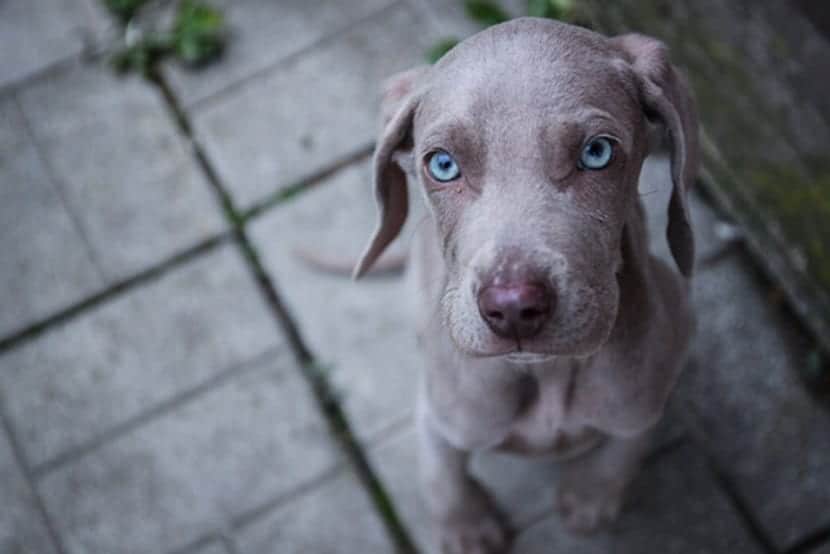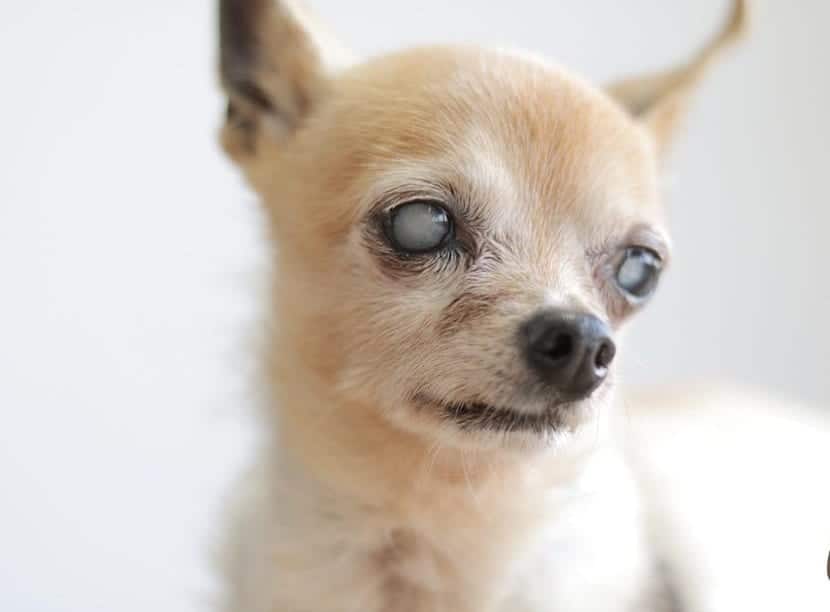
La blue eye disease in dogs It is especially due to a genetic factor such as the Merle gene or albinos of the C series. The unique beauty of the Siberian Husky comes to mind, however, when the dog does not have blue eyes naturally but is acquiring this coloration over time, is a symptom of a disease with ocular effects.
One of the most common reasons for a cloudy, blue-gray appearance in the pupil is the aging of the pet. On the other hand it can be a symptom of a disease that should be paid special attention. Next, we will offer a list of possible causes and recommendations of interest to dog owners.
Diseases that have blue eyes among their symptoms
Among the diseases that present among their symptoms the modification in the tone of the eyes to a bluish color are: keratitis, cataracts, nuclear sclerosis, dystrophy, glaucoma, etc. Of course, not that the pigmentation of the eye changes, what happens is that it is placed as a grayish-blue screen in the pupil that is clearly not normal. This condition has several causes, including diseases such as:
Interstitial keratitis
Interstitial Keratitis which in turn is caused by canine infectious hepatitis It is among the diseases that can affect the color of the eyes of dogs. Among the symptoms of this disease is the inflammation of the cornea and the way to identify it is that a kind of whitish tissue appears in the eye.
The canine infectious hepatitis virus has as its main symptom a white coating in the eye region that is observable within ten days after the dog has been exposed to the disease. This is accompanied by a constant tearing, strabismus, and photophobia. Once the pet has recovered, the cloudy eyes with a grayish-blue tone are present as secondary.
Canine infectious hepatitis is caused by a virus called Canine adenovirus type 1. It is very contagious, but it is perfectly avoided if the vaccination schedule is respected from when the pet is puppy to adult. However, if the dog is infected before being vaccinated, the virus reproduces in the tissues and is eliminated through secretions. The pet will be a carrier of hepatitis even if it is healthy, for approximately nine months.
Hepatitis in dogs severely affects the liver, kidneys, and blood vessels. Among the symptoms, fever and even bloody diarrhea stand out. In some dogs it goes unnoticed, while in others it kills them in a matter of hours. The bluish cloud in the eyes disappears within a few days of having overcome the disease.
Cataract
Pets can also suffer from cataracts, forming a bluish cloudiness. There are cases where cataracts progress slowlyHowever, it can sometimes blind pets in a matter of days or weeks. This disease in dogs is usually inherited or caused by diabetes.
In the case of being congenital, the progression of the disease is carefully studied, and the effects can be reversed with a surgical intervention. However, if the cause is diabetes, the condition must also be controlled so that the cataract can be reversed successfully. It must be constantly monitored and a possible solution is surgery.
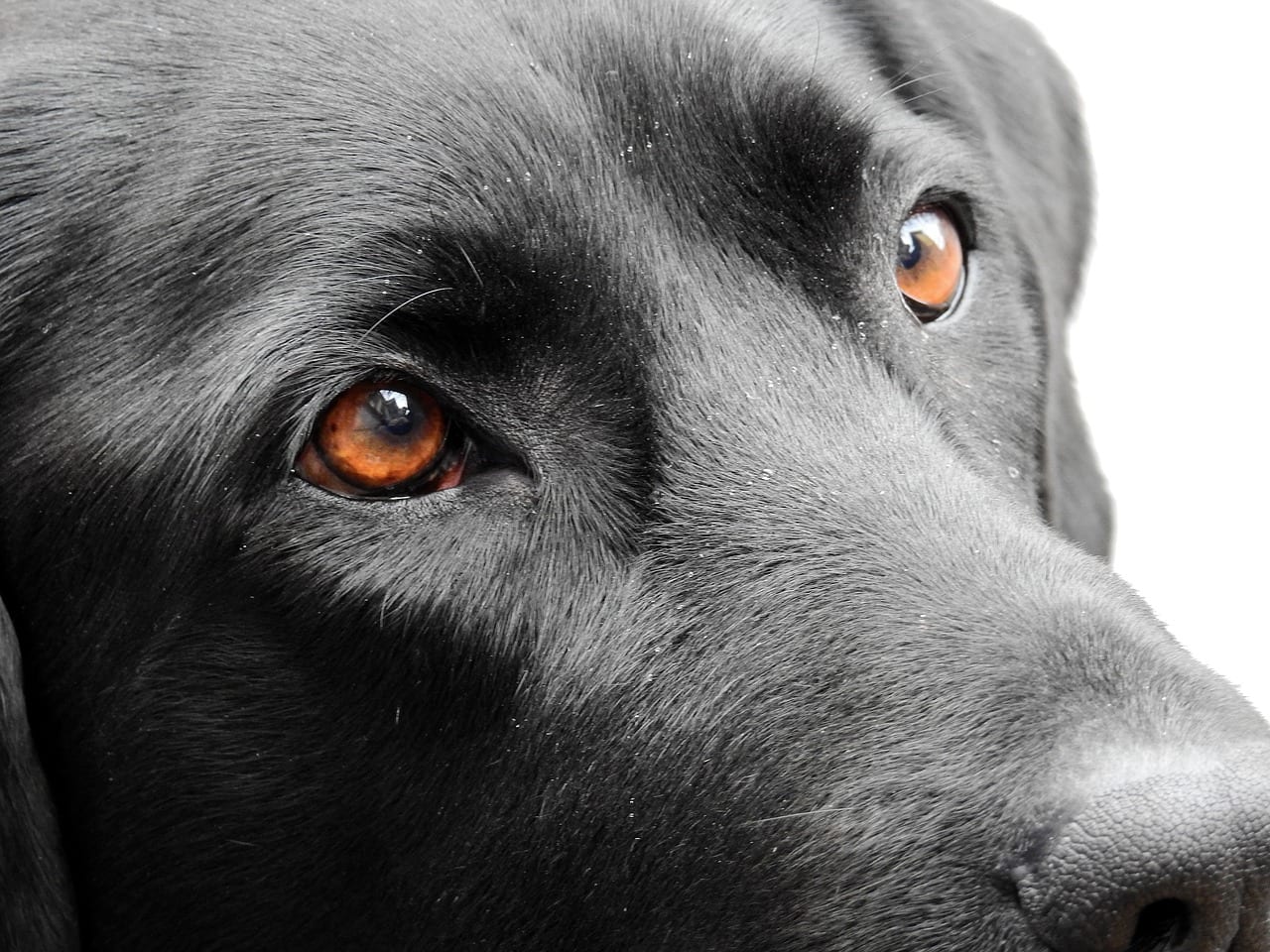
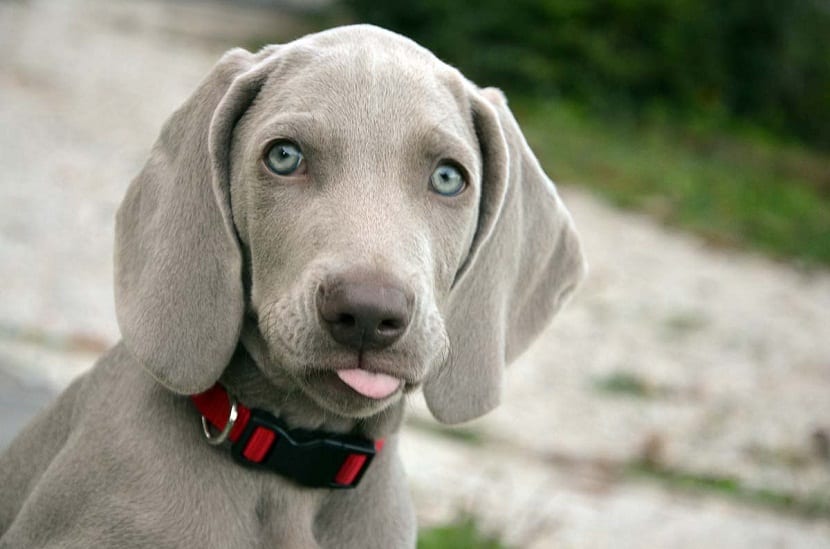
Glaucoma
Glaucoma in dogs is a condition that occurs from increased pressure on the inside of the pet's eye. This condition is painful because fluid builds up inside the eye that doesn't drain properly.. This is precisely what causes the change in eye pigmentation.
This eye disease can start by presenting in one eye, but will eventually spread to both. Primary glaucoma is hereditary and the secondary is a symptom of another disease such as: uveitis, retinal detachment, lens displacement and eye cancer.
Unfortunately, glaucoma in dogs is a very painful disease and progress can only be determined to be able to decide the exact moment in which to proceed. remove the eyeball. Although it sounds like a less than ideal solution, it is currently the only effective treatment that can provide relief to the pet.
Anterior uveitis
Anterior uveitis or iridocyclitis is a disease that some dogs can acquire. It consists of an inflammation of the iris, ciliary body and uvea of the eye. It is a very painful situation and negatively compromises 100% of the dog's vision. In general, this disease does not occur in isolation, since it is always a consequence of another condition in the dog.
The bluish cloudiness is accompanied by a lot of tearing and there is also the possibility of developing strabismus. Treatment of this disease is symptomatic, with medications against pain and inflammation. It must be solved promptly and determine if the cause that is generating the disease is possible.
Corneal dystrophy
This hereditary disease affects both eyes of the pet. Apart from the bluish appearance of the eyes, it is not painful, nor does it affect the quality of vision. The dystrophy that gives the eye the bluish appearance is stromal and does not require treatment. Endothelial and epithelial corneal dystrophy are a little more aggressive, since they cause pain, tearing and require veterinary monitoring.
Recommendations
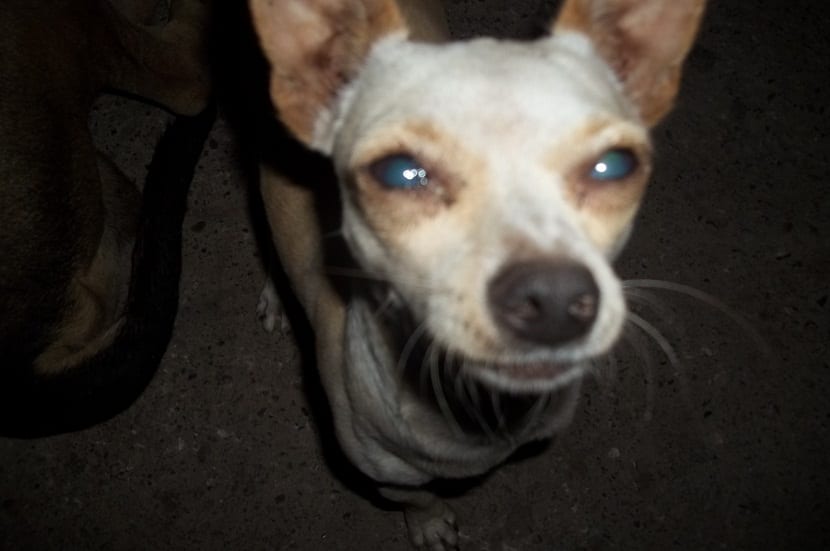
Although it is not always a red flag, the blue cloudiness in the eyes of dogs is a sign that you should go to the veterinary office with the aim of accurately diagnosing the origins. Although some causes are harmless and have no negative effects, owners should not be trusted and a professional opinion is ideal.
Not only should the blue-toned cloudiness in the eyes of dogs be a sign of attention, since there are several symptoms that are indicative that the pet may be suffering from some type of eye disease. Owners must be very attentive when the dog has dryness or excessive tearing.
All the exaggerated legañas should also be reason to visit the vet. Redness, suppuration, constant scrubbing or tripping over objects are signs that the animal's vision is compromised and should be addressed as soon as possible.
